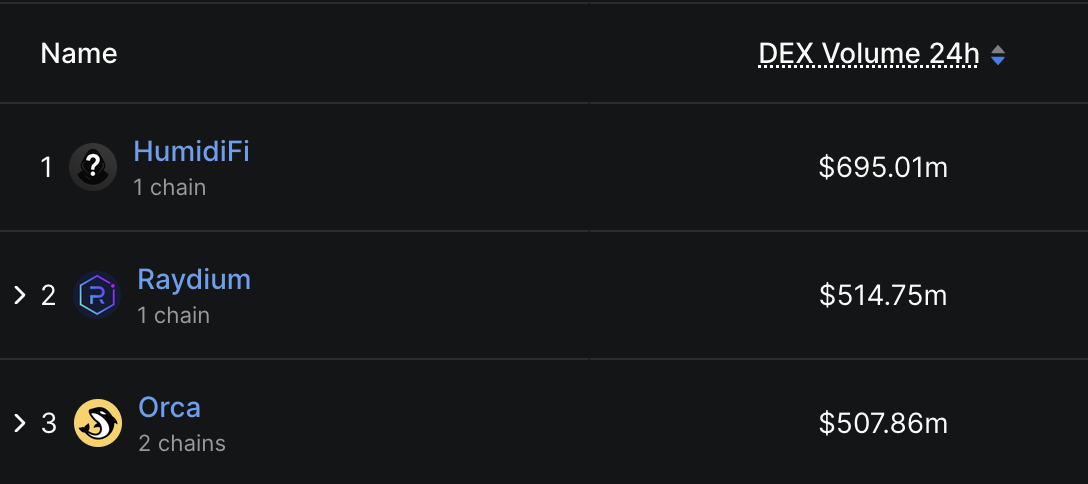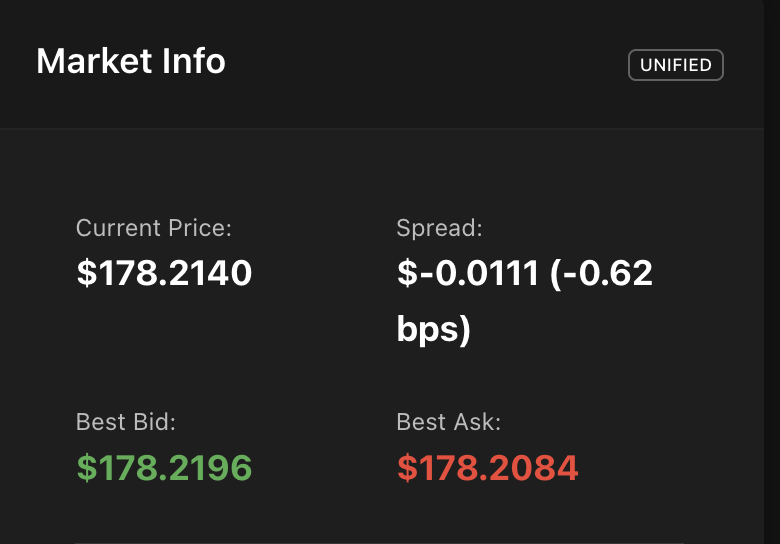
HumidiFi Crowned Solana’s Largest DEX by Trading Volume
Is the future of Solana’s traditional decentralized exchanges under threat?
- Published:
- Edited:
Prop AMMs are taking over Solana DeFi. Despite having no front-end and no public-facing personas, onchain data suggests these ‘Dark AMMs’ are steadily stealing market share from trusted platforms like Raydium and Orca.
But while prop AMMs are opaque and shrouded in mystery, that doesn’t necessarily mean they’re nefarious.
What are Solana’s DeFi teams doing to verify user safety when integrating prop AMMs, and what does their ascendance mean for traditional DEXes?
HumidFi Cracks $695M in Daily Volume
HumidFi, a relative newcomer to the prop AMM circuit, has flipped Raydium to become Solana’s largest decentralized exchange by trading volume. According to DefiLlama, the prop AMM executed over $695M in volume in the past 24 hours, catapulting the platform to the top of Solana’s DEX rankings.

Prop AMMs have been continually growing their market share in Solana’s onchain economy in recent weeks. As recently as 2 weeks ago, prop AMMs collectively made up ~30% of Solana’s DEX volume. That figure has since increased to 33.75%, based on Blockworks data.

The rising dominance of prop AMMs is largely driven by their ability to consistently offer highly efficient swap rates through actively managed routing and arbitrage. Sandwiched.me data indicates that prop AMM spreads often flip negative, enabling some of the most cost-effective trades on the network.
Dark in Name, Not in Nature
Despite the deliberate ambiguity and mysticism surrounding prop AMMs, ecosystem leaders are adamant that they are a force of good and are taking care to ensure end users are well-protected.
Jupiter co-founder Siong Ong has asserted that Solana’s largest aggregator takes plenty of precautions before integrating new prop AMMs. Ong confirms that he has personally met all dark pool operators personally, and ensures that audits are conducted “on both sides” in the interests of security.
Other researchers from across the ecosystem have celebrated prop AMM efficiency. Temporal Director Ben Coverston lauded prop AMM’s capacity to execute seven-figure swaps with minimal slippage.
What Does this Mean for Traditional DEXes?
While prop AMMs may be a net-positive for traders, they represent a looming threat for Solana’s traditional DEXes. Loyalty is a rare commodity for crypto traders, and trusted trading venues like Raydium and Orca are now facing some of their fiercest competition in Solana DeFi history.
SolanaFloor engaged both Raydium and Orca for commentary on whether prop AMMs were an existential threat to traditional AMMs. At press time, Raydium has questioned the accuracy of data providers like DefiLlama and Blockworks. Orca, on the other hand, asserts that the rise of prop AMMs was not entirely unexpected:
"I do think Prop AMM's are a natural addition to Solana DEX market structure. We've been talking internally for a while about how programmatic LP's will compete against more "traditional" LP's, and this is one way in which this has happened. However, I do expect to continue to see more evolutions in Solana market structure, and for Orca to be a player on the bleeding edge" - Yutaro Mori, Orca co-founder and CTO
As it stands, the permissionless nature of traditional dexes like Raydium and Orca gives them a slight advantage over prop AMMs. Given that any token can be paired with liquidity, traditional trading venues can offer a far greater range of assets.
According to Blockworks data, memecoins still drive ~40% of Solana’s onchain trading volume. By leaning into launchpad wars and cultivating memecoin economies, traditional dexes can maintain their edge over prop AMMs.
Read More on SolanaFloor
Institutional interest in Solana ramps up
Solana-Based Digital Asset Products Cross $1B in YTD Inflows
How is Orca Tackling Botted Token Launches?



